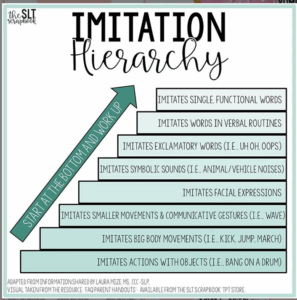What skills help my child learn to communicate?
Communication can look like many different things! This can include: giving a meaningful look, saying words out loud, using a hand gesture or sign, pointing to a picture, and pushing a button on a communication device. Behaviors are a major way that infants and toddlers communicate their needs and wants. You know your child really wants that toy at the grocery store when she is screaming her loudest, even if she never says a distinct word! Respecting all forms of communication and teaching efficient ways to meet needs are key steps in helping your child express themselves.
What makes early intervention special?
In early intervention, each worker that is assigned to a family is trained in other therapy disciplines as part of a larger team, while also relying on their own expertise. As a speech-language pathologist, I may be in the home helping your child learn to reach across their body, expand their pretend play skills, and walk like different animals. Why? Because communication doesn’t develop in isolation—it’s tied to motor, cognitive, self-care, and social skills. By addressing the “big picture,” we help your family take steps forward. Progress in any area often unlocks new communication skills, creating momentum for growth.
What skills contribute to learning communication?
We know that children often follow certain patterns when learning how to communicate in more complex ways. We begin by assessing your child’s strengths and challenges, then identify the next achievable step that can fit into your family’s routines. Early skills include joint attention (focusing on the same thing as someone else), back-and-forth interactions, and different forms of imitation. Copying actions is usually easier than mimicking sounds or words, so starting with more foundational imitation can build connection and confidence while paving the way for more advanced skills.
We often find other ways to help your child communicate effectively while they work on speaking. Success in communication (including using sign language and other alternative communication systems) can boost their motivation to learn new skills while also bridging the communication gap. Learning to communicate more effectively with others is part of lifelong learning. The earliest steps can sometimes be surprising, but they can also be very fun!
By Shanley Morris MS CCC-SLP, Sedgwick County Infant Toddler Services
Graphic used with permission from The SLT Scrapbook.


